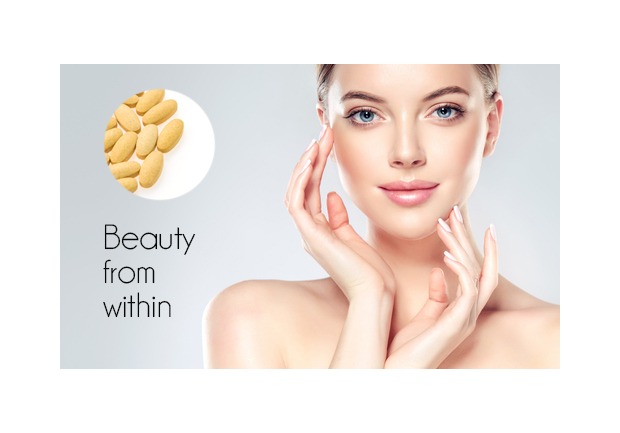The “beauty from within” market, also known as nutricosmetics, has gained momentum in recent years. The general trend towards healthier lifestyles, including personal care, sports and above all, a balanced nutrition, and the growing concern for beauty and healthy aging among consumers is driving this increase.
According to a report published by Coherent Market Insights, the global nutricosmetics market size in 2016 was approximately US$ 5.00 billion (revenue) with Europe leading the market share (US $ 1.65 billion) due to the high penetration of nutricosmetics combined with high adoption rate among consumers as well as high awareness of the products’ benefits.
Nutrition has long been associated with skin health and beauty, however, it is not until recently that the consumers have become aware of this. Several skin conditions such as dryness, acne, aging or even solar resistance have been proven to be affected by nutritional patterns and lifestyle. The correlation between nutrition and skin health and beauty has been a research area that has increased in the last years due to the growing demand of consumers and their increased interest in new ingredients and scientific evidence for their efficacy. Well-documented studies have demonstrated the beneficial effects of antioxidants, phytonutrients, vitamins, and minerals on impaired skin structural and functional integrity and have restored skin appearance and health.
However, while various scientific studies shed the positive light on nutricosmetics, thus suggesting good predictions, there are challenges that could impede this sector from continuing to thrive. At the interception between food and cosmetic market, nutricosmetic products lack clear regulations for promotion and categorization. Considering that one of the key nutricosmetic market challenges is the lack of knowledge of the consumers with respect to the ingredients and their benefits, the lack of a clear regulation that allows companies to promote and inform about the benefits of their product can lead to a stagnation of nutricosmetic market in Europe
The guidelines of the European Food Safety Authority (EFSA) “Guidance on the scientific requirements for health claims related to bone, joints, skin and oral health” delimit health claims relating to the skin within the framework of Regulation 1924 / 2006. According to these guidelines, statements relating to “maintaining the normal structure of the skin, its hydration, elasticity or appearance” are outside the scope of the Regulation, since they do not refer to a physiological function of the organism. Because beauty claims don’t fall within its remit, EFSA does not have official guidelines on this. Instead, nutricosmetics are evaluated on a case by case basis by member states and their advertising authorities, which is a nightmare for nutricosmetic manufacturers who want to sell in more than one country.
An adequate solution would be including the requirements to make “beauty declarations” within the framework of food supplements (Directive 2002/46 / EC) based on the Regulation on advertising in cosmetics. Such a solution would provide sufficient guarantees for both consumers and players while facilitating intra-Community trade. Food Supplement Associations such as AFEPADI in Spain are working in this direction. Unfortunately, nowadays we are still far away from this scenario.
Nuria Caturla, Ph.D
New Product Development Manager
Related articles
https://www.monteloeder.com/blog/2019/03/ozone-the-enemy-of-your-skin/
https://www.monteloeder.com/blog/2019/01/presentation-of-zeropollution-at-the-4th-beauty-innovation-day/


